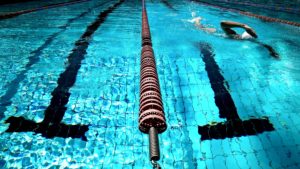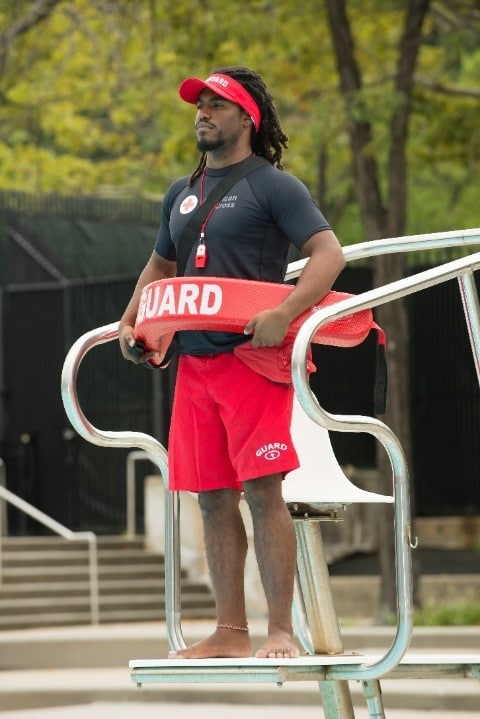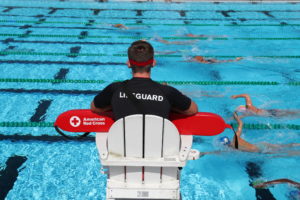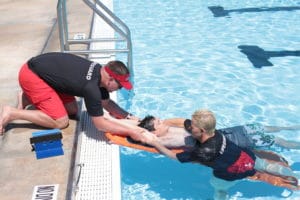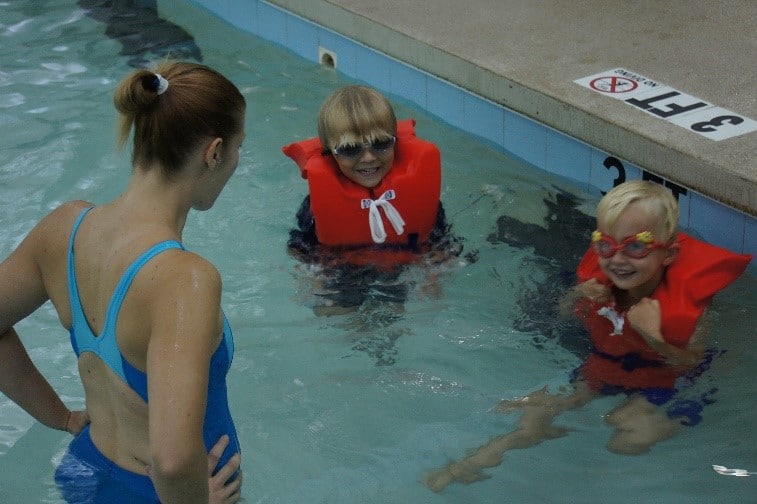As we head out to enjoy the pool, waterpark or waterfront, it’s important to stop and think about safety. It can mean the difference between life and death.
There is a lot of work that goes into planning and managing a safe aquatic facility and lifeguarding operation that’s best left to aquatic professionals. But, you don’t have to be an expert to be able to identify a few key characteristics that contribute to a safer aquatic operation. The American Red Cross Scientific Advisory Council has developed a framework of what you should expect to see at a well-run facility.
When visiting an aquatic facility, you should look for three indicators. If any one of these indicators is not present, consider speaking with a manager or leaving the facility because it may not be the safest place for you and your family.
1. Water Clarity and Quality. Is the water clean, clear, odorless and sanitized?
The water should be clean and clear enough to see through to the bottom of the pool/structure (an exception would be swimming areas in natural environments such as lakes). The pool walls and floor should be clean and free from floating debris or algae. The water should also be free of strong odors.
2. Supervision of Anyone in the Water. Are the lifeguards dedicated, attentive, and ready for response?
The aquatic facility should have lifeguard supervision. If not, clear signage should indicate there are no lifeguards on duty and that you should swim at your own risk.
Lifeguards should be:
- Guarding from designated lifeguard stations such as an elevated lifeguard chair.
- Adequately stationed. Swimming areas are often split into “zones” to allow lifeguards to clearly see all parts of their zone so they can quickly respond.
- Attentive, focused and scanning (looking around at the swimming area and patrons with a purpose.
- Free from distractions.
- Lifeguards should not have any reading material or be using digital devices (phones, tablets, headphones) while on duty.
- Lifeguards should not be engaging in conversation with another person.
- Easily identifiable in a lifeguard uniform/attire equipped and ready to respond.
For non-lifeguarded facilities such as home pools, a responsible person should be designated as a water watcher and constantly supervising anyone in the water until the next person takes over.
3. Injury Prevention Strategies in Use. Are there warnings, rules, and safe strategies being used?
Injury prevention strategies should be in use. Examples of common rules posted and enforced include:
- No diving or headfirst entries in shallow water.
- Swim diapers on pool users without bowel/bladder control.
- No swimming with diarrhea.
- No hyperventilation or repeated breath-holding.
- Only properly fitting Coast Guard-approved life jackets may be worn in the water. (No inflatable floatation devices, such as a water wings.)
Other strategies to prevent injuries include using boundaries such as ropes to designate different swimming areas and separate shallow from deep water, providing properly fitted U.S. Coast Guard-approved life jackets for use, and conducting swim tests prior to swimming.
Well-managed aquatic operations also include on-site supervision of lifeguards, regular and frequent in-service training on water rescue techniques, resuscitation and CPR including practice of facility-specific emergency action plans. Lifeguards must also be trained using facility-specific rescue and resuscitation equipment.
Be Your Own Advocate
As a visitor to any aquatic facility, be sure to be your own advocate for safety first. If you have any questions or concerns about anything you see, seek out a member of the management team and be sure that any issues are resolved. You can also download the free Red Cross Swim App to learn how to help keep your loved ones safe in and around the water.

